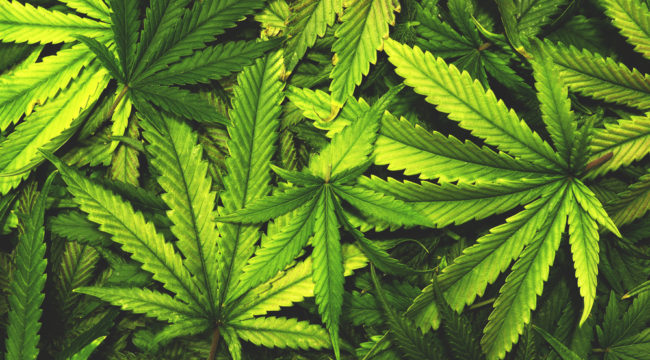The Parallels Between Bitcoin and Marijuana
Pot stocks have had a challenging year overall in 2019. That’s a stark contrast to 2018, when the marijuana market was on fire. But any investors who aren’t still paying close attention to pot here are making a massive mistake.
In fact, pot stocks are currently following a playbook incredibly similar to another completely different asset that’s been in the headlines recently…
I’m talking about bitcoin.
So far, bitcoin weighs in as the single best-performing asset class of 2019. Since January, bitcoin has rocketed about 147% higher.
You might be wondering — what do pot stocks and bitcoin have in common? Their performance certainly looks very different this year. But they’re actually incredibly similar in the way that investors think about them.
In both cases, you have the potential for a transformative shift. In bitcoin, it’s a shift in the financial system. For pot, it’s a shift in politics and science that’s driving pharmaceutical therapies as well as recreational cannabis products.
Both have seen very similar ebbs and flows to their price action. Just last year, bitcoin looked very different.
While pot stocks were soaring, bitcoin prices were plunging. In fact, bitcoin ended 2018 down more than 70%. That’s not the only huge sell-off in bitcoin’s history. Just three years earlier, for instance, bitcoin prices started a slide that wiped out about 73% of its value.
But investors who held out had the last laugh when bitcoin prices surged 191% in the year that followed, and 6,093% at bitcoin’s peak in 2017. What most investors don’t realize is that it’s common for fast-moving, high-growth assets to have jarring corrections along the way up.
By the time they become mainstream, though, those corrections end up looking like blips on the radar. One group of investors that’s acutely aware of that fact is the institutions.
I’ve recently reviewed new data that show while retail investors have been sellers of cannabis stocks, on average, institutions have been significantly increasing their stakes in cannabis names over the last quarter.
In general, assets like cannabis and bitcoin tend to hand investors their biggest gains following a correction of this size. That’s why the pros are betting on colossal gains in pot stocks right now. And it’s why you should too.
Big things are happening right now in the cannabis space. Between political traction of federal legalization and legal cannabis companies generating huge revenue growth, it’s clear that the hype remains justified, even if the market isn’t playing along yet.
The fact that Wall Street is quietly buying pot stocks with both hands adds to the evidence that some major wins are just around the corner. And Wall Street is starting to wake up to the fact that some of the cannabis businesses being built around the world today are deserving of the hype – and much higher share prices.
Legal cannabis spending has been carrying out a parabolic surge higher since 2016 — and several independent sources estimate that it’ll eclipse $40 billion by 2024. That’s an astounding amount of money pouring into a very concentrated collection of small companies.
And it’s inevitable that the price action catches up with the cold, hard cash that these companies are bringing in.
There’s another reason to like marijuana stocks as talk of recession filters across the markets.
The good news is that there’s evidence that points to cannabis trades actually faring better than most through a recession.
The reason? The closest comparable industries to marijuana — health care, alcohol and tobacco — are all known for being recession-resistant.
For example, while the S&P 500 plunged about 37% during 2008, cigarette maker Philip Morris Intl. lost just 9% that year. Beer giant Molson Coors Brewing dipped just 3.78% over that same timeframe. And pharma company Amgen actually rallied 24%!
Folks don’t stop having health problems when the economy turns down — in fact, they often go out in search of lower-cost alternatives like CBD. Likewise, while recessions may force people to go on fewer vacations, they generally keep smaller luxuries like alcohol, tobacco and recreational cannabis.
Now, recession-resistant isn’t the same thing as recession-proof. Despite what the clickbait articles on the mainstream financial news websites might tell you, nothing is truly recession-proof.
But the positioning that cannabis’ peer industries have during recession is just about as good as it gets.
But perhaps one of the strongest reasons why cannabis has a bright future is because it can play a large role in addressing America’s largest crisis…
The biggest crisis facing the United States today isn’t the trade war. It’s not immigration or what’s going on in Washington on either side of the aisle.
The biggest crisis — and perhaps the hardest one to solve — is the opioid epidemic.
In 2015 alone, the opioid epidemic cost the U.S. an estimated $504 billion. But that number pales in comparison to the human cost — in 2017, there were 49,068 opioid overdose deaths in the U.S.
That’s not counting the overdoses where people survived. Today, opioids kill more people than car crashes. And it’s not limited to heroin users in the inner-city slums, either. About 40% of opioid deaths involve prescription drugs, not illicit ones.
In 12 states today, there are more active opioid prescriptions than people.
The DEA recently released some startling data after tracking every opioid pill sold in the U.S. between 2006 and 2012 — 76 billion pills of oxycodone and hydrocodone.
(According to Ars Technica, data from years beyond 2012 are still being withheld to protect the companies and ongoing DOJ investigations.)
In that time frame, enough opiates were produced to supply every American with 36 pills per year.
In extreme cases, like rural Norton, Virginia, residents averaged 306 pills per person per year.
Nearly 100,000 people died of opioid overdoses in that six-year stretch, as opioid abuse has reached epidemic proportions in much of the country.
There’s no quick fix to the opioid crisis. But cannabis might provide a new tool for fighting it.
Early-stage research shows that cannabis can provide an alternative, less-addictive solution to acute and chronic pain management — and even a tool for addicts to combat cravings and anxiety.
Exciting research has showed that cannabis could treat chronic pain sufferers as an alternative to prescription opiates — and that when given the choice, patients tended to opt for the generally safer prescription pot.
Another study suggests that cannabis could actually help folks who’ve already become addicted to opiates stay away from them.
According to another study, the hospitalization rate for opioid abuse and dependence in states with medical marijuana laws is approximately 23% lower than in states without legal access to pot. And emergency room visits for overdoses dropped 13%, on average.
CBD-based therapies could be one of the most powerful tools in the arsenal of the folks fighting against the opioid epidemic.
Without a doubt, that’s a good thing for the country.
And considering the sheer scope of the opioid crisis, it’s likely to also be a very good thing for the legal cannabis industry.
The bottom line is, cannabis is demonstrably safer and less likely to be abused than many drugs currently legal in the country. And the evidence for medical uses of the plant is mounting, beyond its ability to help resolve the opioid crisis.
Regards,
Ray Blanco
for The Daily Reckoning



Comments: